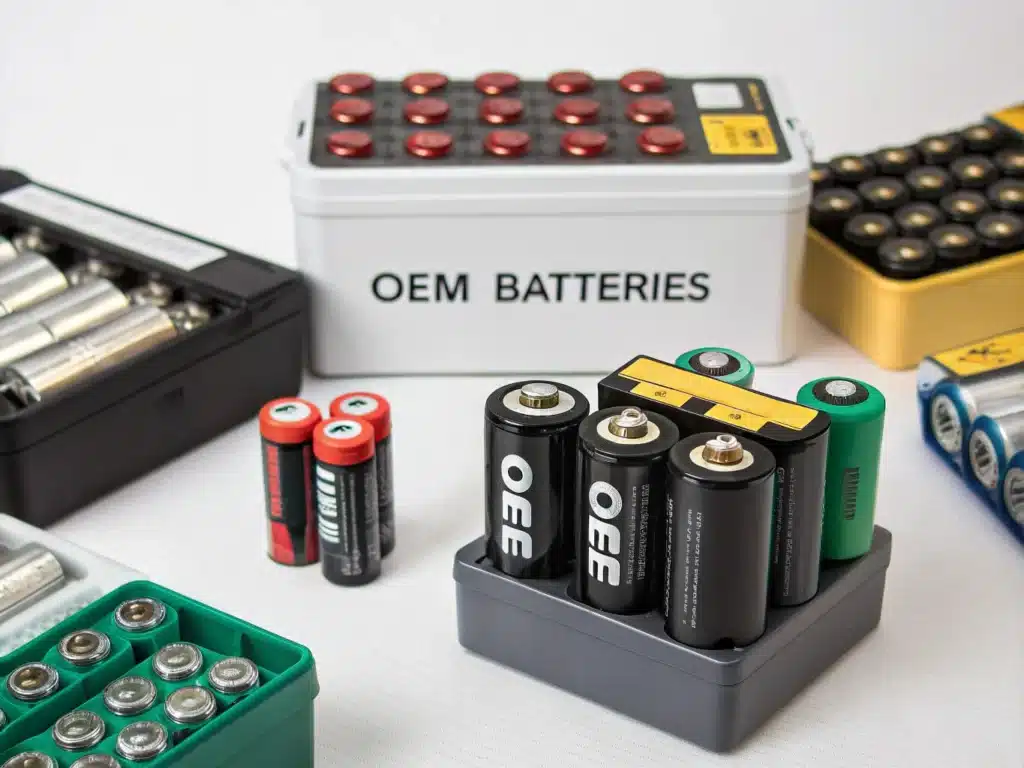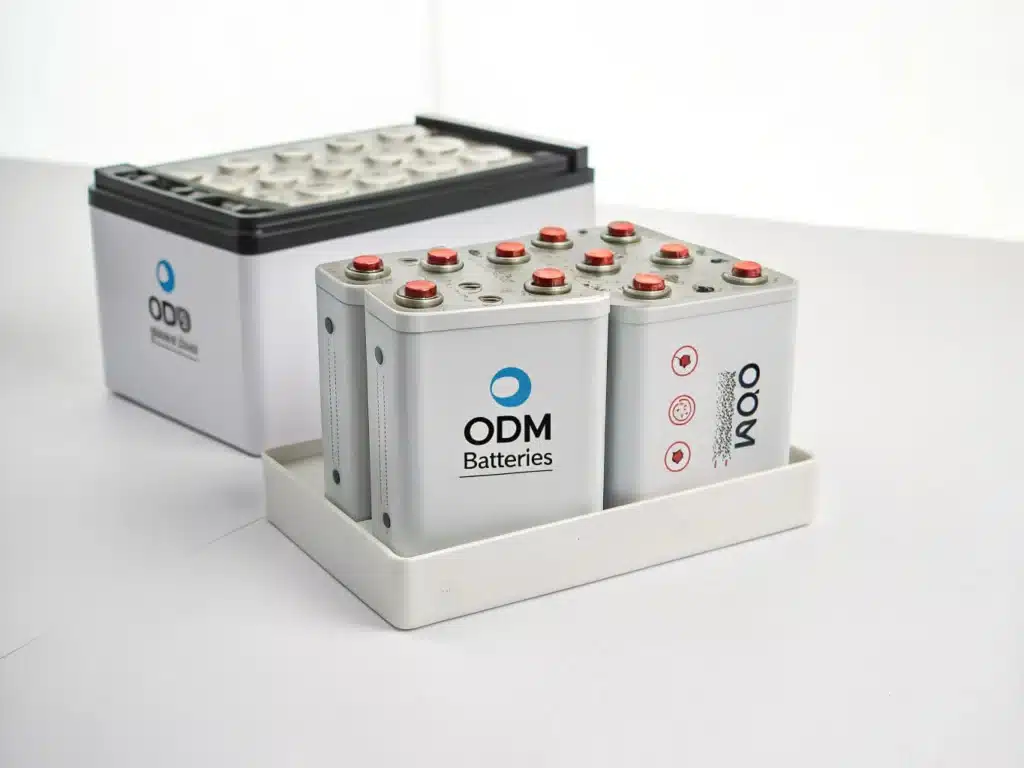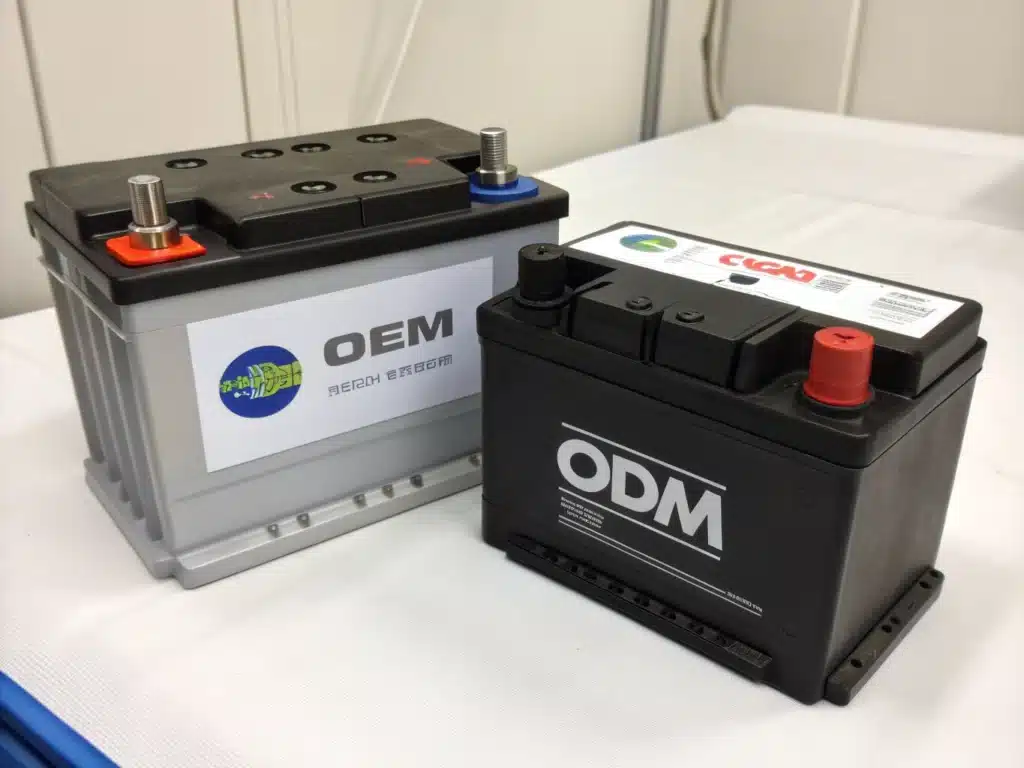Do you design it yourself and find a factory to produce the battery exactly according to your drawings, or do you see what ready-made battery solutions the factory has, or ask them to help you design one based on existing technology, and then you put your own brand on it and produce your ODM battery.
Today we want to help you thoroughly understand the fundamental differences between OEM and ODM in battery supply. Once you understand this, you can make the most suitable choice based on the specific circumstances of your project, such as how much budget you have, how high your battery performance requirements are, and whether you are in a hurry to go to market, so as to avoid detours, ensure that there are no problems with the battery, and support the success of your equipment products.
Table of Contents
ToggleWhat is OEM battery

OEM batteries are batteries produced by professional battery manufacturers according to specific designs and specifications provided by customers. You provide complete parameter requirements and specifications, and the factory produces them exactly according to your requirements.
What is ODM battery

Simply put, ODM batteries are batteries that you select from existing battery solutions provided by the factory, or ask them to make slight modifications based on existing solutions and then put your brand on them. ODM batteries can help you save development costs and speed up time to market.
Key differences compared: OEM vs ODM batteries
Understanding the core differences between OEM and ODM batteries is the basis for making the right purchasing decisions. The two models differ significantly in many key dimensions, which directly affect the product development path, cost-effectiveness and market competitiveness. The following will be a detailed comparison from multiple perspectives:

Design Control & Customization
OEM: You have the final say. You provide the complete drawings, what shape and performance you want, and the factory will make it according to your requirements. The degree of customization is very high.
ODM: The factory has the final say. They have a ready-made solution, providing the factory’s existing lithium battery models and brochures. You just make slight modifications to the existing batteries, or put your brand on them.
Intellectual Property - IP
OEM: The design is yours to invest in R&D, and the intellectual property (IP) is yours.
ODM: The design belongs to the factory, and the IP also belongs to the factory. You buy the product, not the design itself. This is very important for your subsequent product planning.
Development Effort & Time-to-Market
OEM: Because it needs to be designed and verified from scratch, it takes much longer.
ODM: It uses a ready-made solution, which is much faster and can help your product to market faster.
Cost Structure
OEM: The initial R&D investment is large, and it takes money and effort to design. But in the long run, you may have more sophisticated cost control.
ODM: Low initial investment, no R&D expenses. Usually because of factory mass production, the unit price may be advantageous, but you are not very clear about the specific cost structure.
Technical Threshold & Resource Requirements
OEM: You need to have technicians who understand batteries, or have mature product solutions, can provide detailed specifications, and can communicate with the factory on technical details.
ODM: You don’t need to understand the details of battery technology, just choose a solution. The requirements are low and it is very friendly to start-ups or teams with few resources.
Quality Control & Risks
OEM: You have to spend time setting standards and monitoring, but the advantage is that the quality control is high. However, if there is a problem with the design itself, the risk is yours.
ODM: You have to trust the factory’s quality control. The risk is that your battery may be the same as others, with no distinctive features, and you don’t have the core technology.
To summarize briefly, if you are unique, want to be in control, have sufficient budget, and are not in a hurry, consider OEM batteries. If time is urgent, you want to save trouble, and do not have high requirements for customization, give priority to ODM batteries. The following is a comparison table between OEM batteries and ODM batteries:
| Comparison Dimension | OEM Battery (Original Equipment Manufacturer) | ODM Battery (Original Design Manufacturer) |
| 1. Design Control & Customization | Brand fully controls design details; enables high customization (e.g., unique shapes, specific performance). | Factory leads design (based on existing platforms/solutions); Brand has limited control; Customization is low (often limited to branding/cosmetics). |
| 2. Intellectual Property (IP) Ownership | Design IP typically belongs to the Brand. | Design IP typically belongs to the ODM Factory; Brand gets product usage rights. |
| 3. Development Effort & Time-to-Market | Requires significant R&D investment (resources & time) from the Brand; Longer development cycle / time-to-market. | Lower investment from the Brand; Leverages existing mature solutions; Faster time-to-market. |
| 4. Cost Structure | High upfront R&D investment; Potentially finer control over Bill of Materials (BOM); Unit cost varies with design complexity & volume. | Low upfront investment; Often benefits from economies of scale; Potentially lower transparency on cost breakdown. |
| 5. Technical Threshold & Resource Requirements | High technical capability and project management skills required from the Brand. | Low technical requirements for the Brand; Suitable for teams with limited resources or battery expertise. |
| 6. Supplier Selection & Management | Requires finding factories with specific manufacturing capabilities; More complex communication & coordination. | Can select suppliers offering mature product solutions; Relatively simpler communication. |
| 7. Quality Control & Risks | Brand needs deep involvement in setting/monitoring quality standards, allowing better quality control; Design risks borne by the Brand. | Relies on the ODM’s quality system; Risks include product commoditization/similarity to competitors and lack of insight into core technology. |
How to choose: OEM or DOM battery
You will usually choose OEM mode in the following situations:
Pursuit of uniqueness: You need a highly customized or very unique battery, such as one with a special shape to perfectly fit your product or with very specific, unconventional performance requirements.
You have strong R&D capabilities: Your company has strong R&D capabilities, technical expertise, and resources to independently complete battery design work.
You want full control: You want full control over every detail of the product’s specifications, materials used, and quality standards. The entire design is entirely up to you.
Intellectual Property ownership is important: It is critical for you to own the intellectual property (IP) of this unique battery design.
You have in-depth experience in supply chain management: You have experience and ability to manage the supply chain aspects associated with this unique design.
You may prefer ODM in the following situations:
Speed First: Your primary goal is to get your product to market quickly. You prefer an off-the-shelf or similar battery solution.
Budget considerations: You want to minimize the initial investment in R&D. By choosing ODM batteries, you are using the designs that have already been developed by the lithium battery factory, saving R&D costs.
A standard solution will do: A standard, off-the-shelf battery solution will meet your product needs without requiring a high degree of customization.
Leverage external expertise: You lack battery expertise or dedicated R&D resources and would like to rely on the expertise of a manufacturer.
Seeking cost-effectiveness: You want to take advantage of the existing design and scale production of ODM battery factories, which usually leads to lower unit costs.
Acceptable product homogeneity risk: You can accept that the final battery solution may be similar or identical to other brand products on the market.
Summarize
In summary, there is no absolute difference between OEM and ODM battery models. The key lies in which model can best match the specific needs, available resources and long-term goals of your project.
Before making a decision, please be sure to prioritize the above key factors. You can contact us directly to get the best lithium battery solution.
FAQ
Select OEM mode:
- Enterprise type: Enterprises that require customized batteries and have a mature R&D team.
- Typical application areas: automotive batteries, industrial equipment batteries, etc. These industries have very strict requirements for battery performance, size, materials, etc., usually requiring in-depth technical parameter definition and quality control.
Select ODM mode:
- Enterprise type: Enterprises that need to quickly enter the market, have limited research and development resources, or have a high demand for standardized products.
- Typical application areas: consumer electronics (such as GPS tracking systems, wearable devices) and energy storage systems (such as household solar energy storage). These industries tend to quickly enter the market through existing mature solutions.
